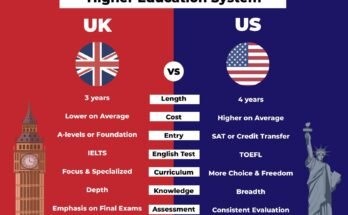Without a doubt, logical inconsistencies enrapture. They likewise enrapture, energize, entertain, invigorate. furthermore, tempt. All the more critically, they stimulate, energize, and rouse interest” (Kleiner and Movshowitz-Hadar, 1994, p. 1). A logical inconsistency, in its utilization, is an explanation that goes against regularly held suspicions.
<strong>Match Stick Design</strong> | <strong>Can Start Page Numbering On Page 3?</strong>
Click here https://whatismeaningof.com/
Oddities have a long history in science. Zeno’s Catch 22s have all the earmarks of being the earliest in written history and they showed up in the fifth century BC. Zeno of Elia (ca. 490 BC – ca. 430 BC) planned contentions, known as Zeno’s mystery, apparently to guard the hypothesis of his educator Parmenides that reality and movement and There is just a single in the method of progress, very few. are inconceivable. The most well known of Zeno’s oddities, Achilles and the turtle, “expresses that the slowest article can’t be overwhelmed by the quickest on the grounds that the follower should initially arrive at the point from which the pursuit started to essentially sluggish consistently ahead” (Kline 1990, p. 36). Quinn (1976) noticed that “the revelation of a Catch 22 at least a few times in history has been an event for significant remaking on the underpinnings of thought” (p. 3), and surely so was the situation with Zeno’s oddities. As referenced before, in the fourth century BC Aristotle presented the polarity of the expected boundlessness and the genuine endlessness for of managing the oddities of limitlessness, like Zeno’s mystery. One more model is Russell’s Catch 22, found in 1901, which emerges when R = {x/x ∉ x} is treated as a set as it moves towards R ∈ R ⇔ R ∉ R. goes. Russell’s oddity shook the groundworks of science and made an emergency. , and prompted the adage advancement of set hypothesis.
To know more information like this 20 of 1800
Torricelli’s Boundless Long Strong, an inconsistency apparently of its thoughts in the seventeenth hundred years, uncovered the deficiency of the empiricist idea of endlessness for the numerical improvement of the seventeenth hundred years. Later in the hundred years, John Locke recognized the deficiency of the extended conversation of the empiricist perspective on the limitless (Mancosu and Valati 1991).
Logical Inconsistencies In Math Schooling Exploration
Research contrasts have been utilized in science training as a focal point on understudy learning. Movshovitz-Hadar and Hadass (1990, 1991) analyzed the job of numerical differences in the pre-administration training of secondary school math educators. That’s what he inferred
An inconsistency places the student in a mentally terrible position. The drive to determine the inconsistency is a strong inspiration for the change of the information system. For instance, an understudy who has procedural comprehension might encounter a change to the phase of social grasping (Mowschowitz-Hadar and Hadas 1991, p. 88).
Nez (1994) utilized Zeno’s Catch 22, the division, in a dynamic method for examining how the possibility of the boundless in the little arisen in the personalities of understudies matured 8, 10, 12 and 14. He reasoned that before the age of 12 there is a profound and striking conventional qualification between vastness in the huge and endlessness in the little. For instance, albeit 8-year-olds can envision the idea of the endless in their settled upon world, they may not see the qualification of “boundless in the little.” Mamolo and Zazakis (2008) utilized Hilbert’s Excellent Inn oddity and the ping-pong ball problem to investigate the gullible and arising ideas of limitlessness of two gatherings of college understudies with various numerical foundations; Graduate understudy in the Aesthetic Sciences Program and graduate understudy in the Math Training Expert’s Program. They observed that human sciences understudies were bound to consider the possibility of a limited endless set, like limitlessly many time stretches inside a limited time span, risky. He noticed that this trouble embodies protection from the genuine boundlessness and can likewise be credited to explicit difficulties in regards to “vastly little” contrasted with limitlessly enormous.
Painter’s Mystery
Geithner (2005) states that the mystery of Gabriel’s horn is a most loved subject of numerous math educators. The conundrum of Gabriel’s horn, which he alludes to, isn’t Torricelli’s boundlessly lengthy substantial that caused awe and doubt in the seventeenth 100 years among mathematicians and thinkers the same. This is the painter’s Catch 22 given beneath:
The inward surface of Gabriel’s horn is boundless; Subsequently a limitless measure of paint is expected to paint the inside surface. Yet, the volume of the horn is limited (π), so the inside surface can be painted by emptying a measure of paint into the horn and afterward vacuuming it.
The surface region and limited volume of Gabriel’s horn are not examined as problematic in analytics course books. For instance Single Variable Math: Early Transcendentals by Stewart (2011) discusses Zeno’s mysteries, yet the surface region and volume estimations of Gabriel’s Horn are given as an activity without any.Comment.
Nonetheless, in the reading material Math – A Total Course by Adams and Essex (2010), the over Painter’s mystery is referenced in a marginally unique manner in the segment Blocks segment – Solids of Upset. A model depicts exhaustively how to “find the volume of an endlessly lengthy horn created by turning the district limited by y=1x and y = 0 and misleading the right of x = 1 about the x-hub” ( page 393) ) Subsequent to showing that the volume of the horn is a cubic unit, it is noted:
dx/x = ∞. We have a Catch 22: it takes a boundless measure of paint to paint the circle however just a limited add up to fill the horn got by pivoting the circle. (How might you settle this conundrum?) (p. 393)
While the mystery is referenced, the goal isn’t expounded on. Utilizing the circle strategy the volume of Gabriel’s horn can be determined by 1π(1x)2dx where (1×2) is the cross sectional region of the horn opposite to the x-hub. This ill-advised basic joins:
1π(1x)2dx=lima→∞∫a1π(1x)2dx=lima→∞⎛⎝⎜π∫a11x2dx⎞⎠⎟=lima→∞(π[−1x]a1)=lima→∞(π[1 −1a ])=π.
The volume of Gabriel’s horn can likewise be determined utilizing a barrel shaped circle:
10(x−1)2πydy=lima→0+2π∫1a(xy−y)dy=2πlima→0+∫1a(1−y)dy=π.
This is like Torricelli’s strategy for finding the amount utilizing univariate. The surface region of the horn is given by the ill-advised fundamental:
12π(1x)1+(−1x)2dx−−−−−−−−−−√.
presently,
Lima→∞∫a12π(1x)(1+(−1×2)2−−−−−−−√dx≥lima→∞∫a12π(1x)dx=lima→∞2π[lnx]a1=lima →∞ 2π [lna−ln1]=∞.
Consequently the surface region is endless.
Is a limitless measure of paint expected to paint the inward surface of Gabriel’s horn? As per Stewart (2011), “we need to characterize the surface area of unrest so that it matches our instinct. In the event that the surface region is A, we can envision that the surface to be painted is a similar measure of paint would be required as a level region with an area “(p. 569). To paint a surface means to apply a layer of paint to the surface. So how much paint expected alludes to how much paint. A limitless sum (volume) of paint is expected to paint a level surface of boundless surface region with a uniform thickness c as the sum expected to paint a limited region An is cA and limA→∞cA=∞ Is. So instinctively one can see that painting the internal surface of Gabriel’s horn requires a boundless measure of paint, on the grounds that the surface region of Gabriel’s horn is limitless.
Painter’s mystery reveals insight into the incomprehensible idea of Torricelli’s boundlessly lengthy strong’s limited volume and endless surface region. In spite of the fact that analytics course books don’t talk about Gabriel’s horn which has boundless surface region and limited volume Catch 22s, some math reading material recognize this by referencing Painter’s conundrum.




